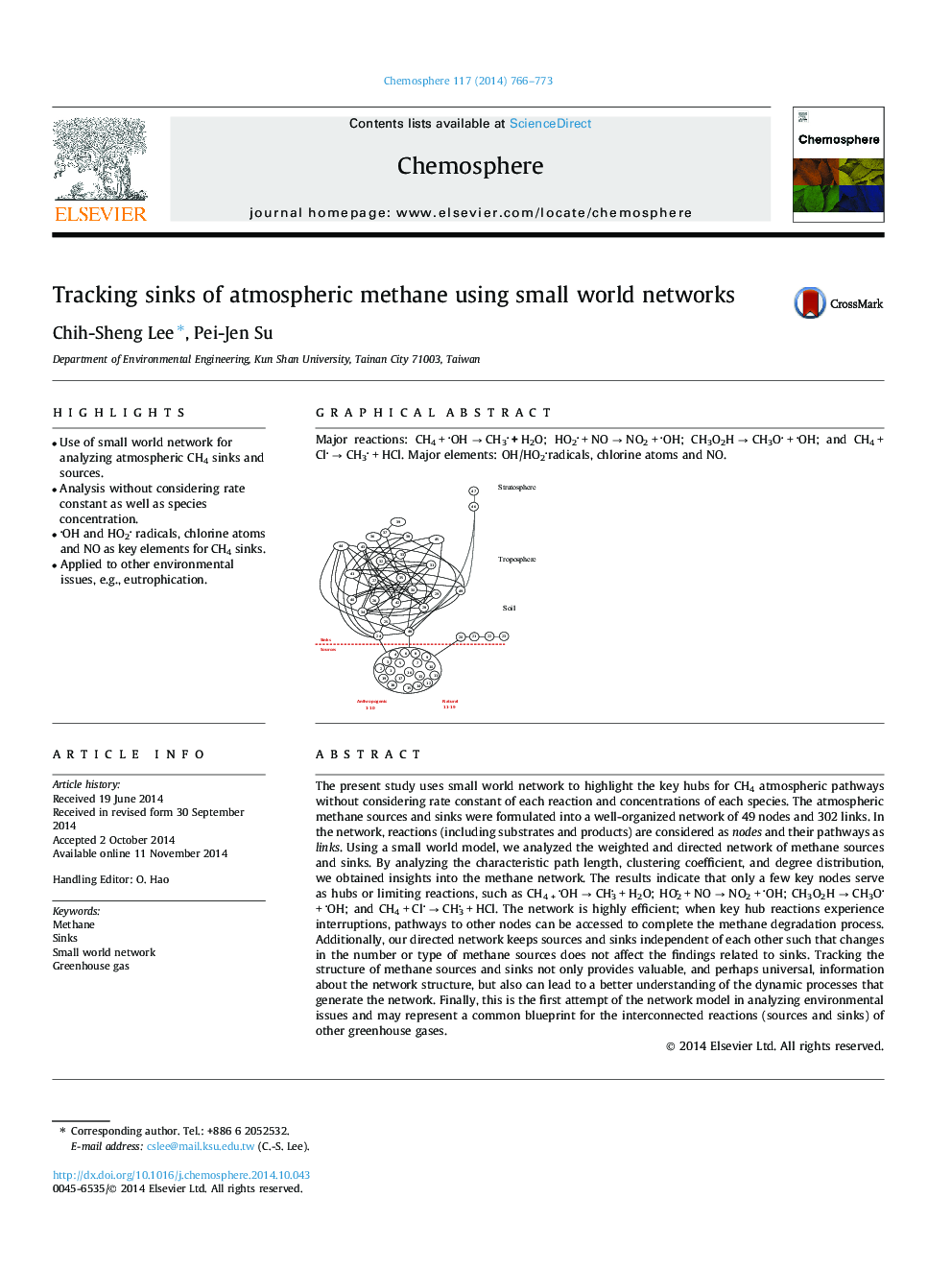| کد مقاله | کد نشریه | سال انتشار | مقاله انگلیسی | نسخه تمام متن |
|---|---|---|---|---|
| 6308564 | 1618854 | 2014 | 8 صفحه PDF | دانلود رایگان |
- Use of small world network for analyzing atmospheric CH4 sinks and sources.
- Analysis without considering rate constant as well as species concentration.
- OH and HO2 radicals, chlorine atoms and NO as key elements for CH4 sinks.
- Applied to other environmental issues, e.g., eutrophication.
The present study uses small world network to highlight the key hubs for CH4 atmospheric pathways without considering rate constant of each reaction and concentrations of each species. The atmospheric methane sources and sinks were formulated into a well-organized network of 49 nodes and 302 links. In the network, reactions (including substrates and products) are considered as nodes and their pathways as links. Using a small world model, we analyzed the weighted and directed network of methane sources and sinks. By analyzing the characteristic path length, clustering coefficient, and degree distribution, we obtained insights into the methane network. The results indicate that only a few key nodes serve as hubs or limiting reactions, such as CH4 + OH â CH3 + H2O; HO2 + NO â NO2 + OH; CH3O2H â CH3O + OH; and CH4 + Cl â CH3 + HCl. The network is highly efficient; when key hub reactions experience interruptions, pathways to other nodes can be accessed to complete the methane degradation process. Additionally, our directed network keeps sources and sinks independent of each other such that changes in the number or type of methane sources does not affect the findings related to sinks. Tracking the structure of methane sources and sinks not only provides valuable, and perhaps universal, information about the network structure, but also can lead to a better understanding of the dynamic processes that generate the network. Finally, this is the first attempt of the network model in analyzing environmental issues and may represent a common blueprint for the interconnected reactions (sources and sinks) of other greenhouse gases.
Major reactions: CH4 + OH â CH3 + H2O; HO2 + NO â NO2 + OH; CH3O2H â CH3O + OH; and CH4 + Cl â CH3 + HCl. Major elements: OH/HO2radicals, chlorine atoms and NO.121
Journal: Chemosphere - Volume 117, December 2014, Pages 766-773
